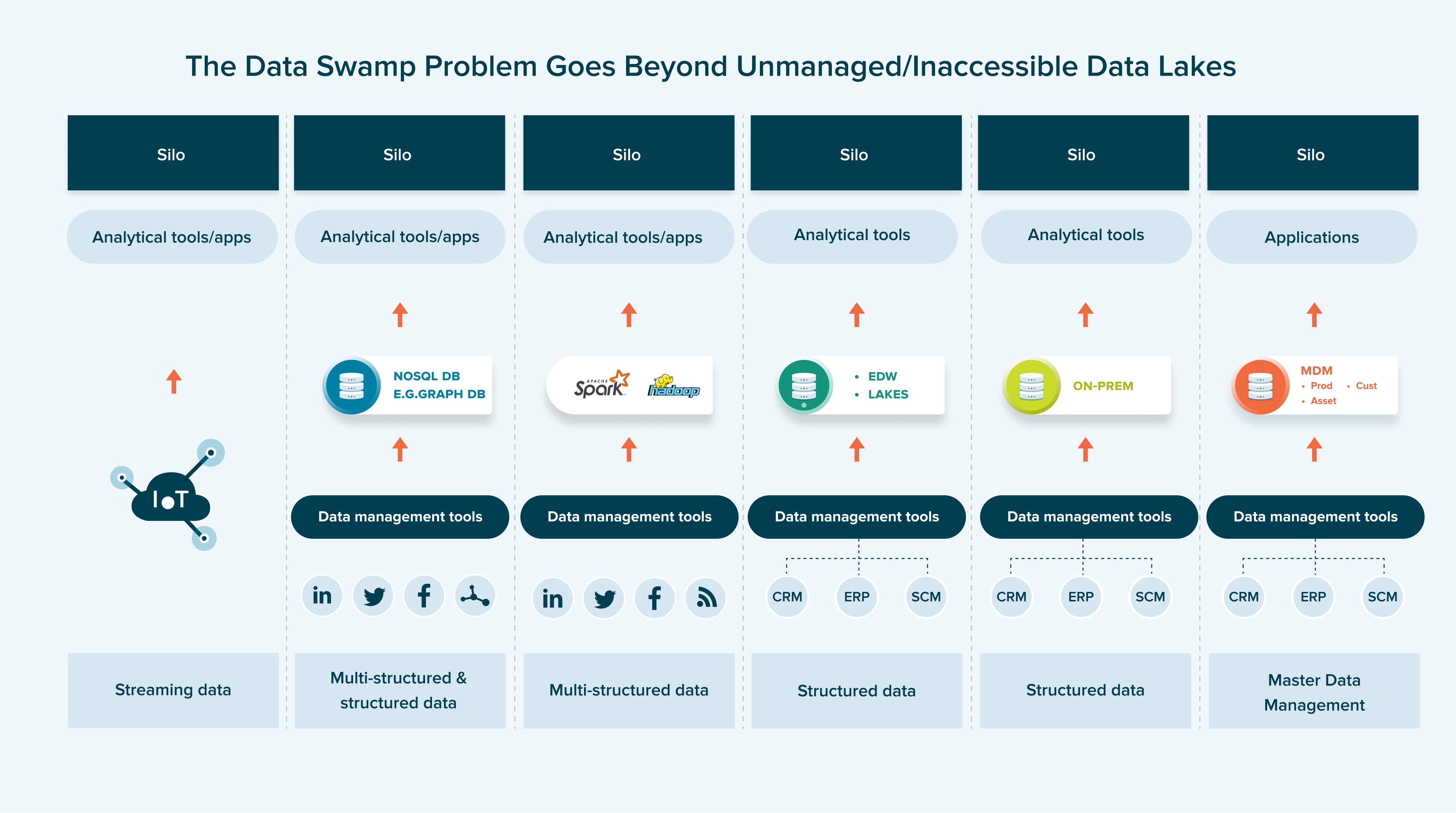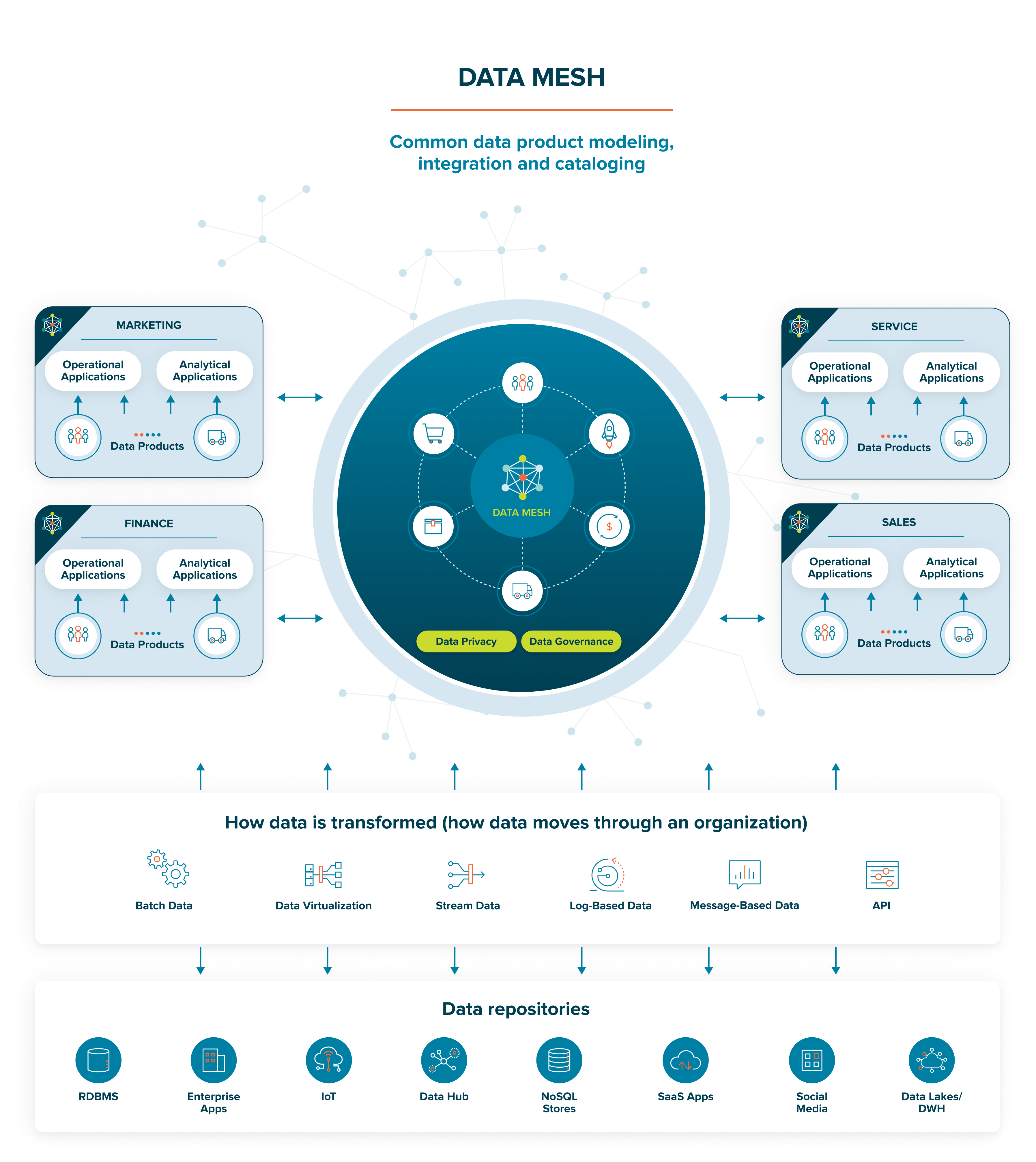What is a Data Mesh: Principles and Architecture

Get the latest in your inbox

Get the latest in your inbox
Rather than dwell on the definitions (Gartner counts at least three) of data mesh, I’ll go with my lay version:
data mesh [dey-tuh- mesh]
A decentralized architecture capability to solve the data swamp problem, reduce data analytics cost, and speed actionable insights to better enable data-informed business decisions.
There, I said it without the buzzwords like “data democratization” or “paradigm shift.” Mea culpa for throwing in “actionable insight.” Let’s decompose what data mesh means for the real working class, our data engineers, architects, and scientists.
Data swamps are losing their role as a centralized data platform

In the mid-1990s, data warehousing was bursting onto the data management scene. Fueled by the hype of the fabled “beer and diapers” story, businesses were pouring tens of millions of dollars to build huge data monoliths to handle the consumption, storage, transformation, and output of data in one central system to answer business questions that required complex data analytics such as “who are the high-value customers most likely to buy X?”
The thesis of data warehousing worked like a charm at that time. However, as the appetite for data analytics increased, so did the need for more data to be ingested. The complexity and pace of data pipelines soared (as did the nickname “data wranglers”). I began to see the cracks forming in the data warehouse theory and delved into its growing failure to get value from analytical data in my master’s research.
As social media and the iPhone became the norm, many turned to a second generation of data analytics architecture called data lakes. While traditional data warehouses used an Extract-Transform-Load (ETL) process to ingest data, data lakes instead rely on an Extract-Load-Transform (ELT) process that puts data into cheap BLOB storage. This eliminated the big shortcomings of data warehouses but spurred the “Let’s just collect everything” theology of data swamps.
Further learning: Data Lake Acceleration

Fast forward to today. Only 32% of companies are realizing tangible and measurable value from data (“trapped value”), according to a study by Accenture. The roaring demand for “discovery or iterative style analytics” (where consumers don’t really know the questions or data they need) is raising access to data to a whole new level with new/expanding data sources (or “wide data”) across multi- and hybrid cloud environments, thrusting massive friction onto traditional data lakes and warehouses.
Nowhere is this pain more visible than among data and analytics teams where:
A data mesh aims to create an architectural foundation for getting value from analytical data and historical facts at scale – scale being applied to the constant change of data landscape, proliferation of data and analytics demand, diversity of transformation and processing that use cases require, and speed of response to change.
To achieve this objective, most experts agree that the thesis of data mesh is based on four precepts:

Data mesh inverts the traditional data warehouse/lake ideology by transforming data gatekeepers into data liberators to give every “data citizen” (not just the data scientist, engineer, or analyst) easy access and the ability to work with data comfortably, regardless of their technical know-how, to reduce the cost of data analytics and speed time to insight.
However, the rise of data mesh does not mean the fall of data lakes; rather, they are complementary architectures. A data lake is a good solution for storing vast amounts of data in a centralized location. And data mesh is the best solution for fast data retrieval, integration, and analytics. In a nutshell, think of a data mesh as connective tissue to data lakes and/or other sources.
Introduced by Thoughtworks, data mesh is “a shift in modern distributed architecture that applies platform thinking to create self-serve data infrastructure, treating data as the product.” It is a data and analytics platform where data can remain within different databases, rather than being consolidated into a single data lake.
Like a data fabric architecture, a data mesh architecture comprises four layers. To provide useful information to data and analytics professionals, I’ll break the data mesh rule by also talking about specific technologies and representative vendors.
VentureBeat says a data mesh architecture “connects various data sources (including data lakes) into a coherent infrastructure, where all data is accessible if you have the right authority to access it.” This doesn’t mean there is one big, hairy data warehouse or lake (see data swamp problem) — the laws of physics and the demand for analytics mean that large, disparate data sets can’t just be joined together over huge distances with decent performance. Not to mention the costs of moving, transforming, and maintaining the data (and ETL | ELT).

Enter the semantic layer. A semantic layer represents a network of real-world entities— i.e., objects, events, situations, or concepts — and illustrates the relationships to answer complex cross-domain questions that can be shared and re-used based on fine-grained data access policies and business rules. It is comprised of three layers (and a knowledge catalog that interfaces with governance tools):
The big payoff of a semantic layer is in providing a better way to enable self-service, federated queries, enabling you to build and deploy analytics data products quickly and efficiently.
Further learning: How Knowledge Graphs Work
Generally, organizations handling and analyzing a large amount of data sources should seriously consider evolving to a data mesh architecture. Other signals include a high number of data domains and functions teams that demand data products (especially advanced analytics such as predictive and simulation modeling), frequent data pipeline bottlenecks, and prioritizing data governance.
Stardog commissioned Forrester Consulting to interview four decision-makers with experience implementing Stardog. For this commissioned study, Forrester aggregated the interviewees’ experiences and combined the results into a single composite organization. The key findings were that the composite organization using the Stardog Enterprise Knowledge Graph platform realized the following over three years:
How to Overcome a Major Enterprise Liability and Unleash Massive Potential
Download for free